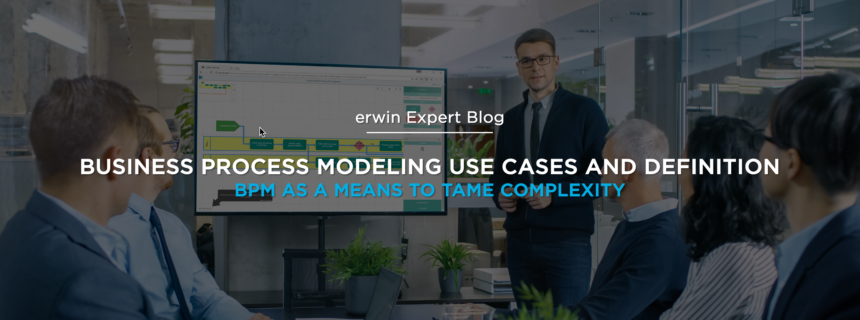Business Process Modeling Use Cases and Definition

What is business process modeling (BPM)? A visual representation of what your business does and how it does it. Why is having this picture important?
According to Gartner, BPM links business strategy to IT systems development to ensure business value. It also combines process/ workflow, functional, organizational and data/resource views with underlying metrics such as costs, cycle times and responsibilities to provide a foundation for analyzing value chains, activity-based costs, bottlenecks, critical paths and inefficiencies.
Every organization—particularly those operating in industries where quality, regulatory, health, safety or environmental issues are a concern—must have a complete understanding of its processes. Equally important, employees must fully comprehend and be accountable for appropriately carrying out the processes for which they are responsible.
BPM allows organizations to benefit from an easily digestible visualization of its systems and the associated information. It makes it easier to be agile and responsive to changes in markets and consumer demands,
This is because the visualization process galvanizes an organization’s ability to identify areas of improvement, potential innovation and necessary reorganization.
But a theoretical understanding of business process modeling will only get you so far. The following use cases demonstrate the benefits of business process modeling in real life.
Business process modeling (BPM) is a practice that helps organizations understand how their strategy relates to their IT systems and system development.
Business Process Modeling Use Cases
Compliance:
Regulations like the E.U.’s General Data Protection Regulation (GDPR) and the California Consumer Privacy Act (CCPA) are requiring businesses across industries to think about their compliance efforts. Business process modeling helps organizations prove what they are doing to meet compliance requirements and understand how changes to their processes impact compliance efforts (and vice versa).
The visualization process can aid in an organization’s ability to understand the security risks associated with a particular process. It also means that should a breach occur, the organization’s greater understanding of its processes and related systems means they can respond with greater agility, mitigate the damage and quickly inform affected parties as required specifically by GDPR.
In the case of an audit, BPM can be used to demonstrate that the organization is cognizant of compliance standards and is doing what is required.
This also extends to industry-specific other compliance mandates such as those in healthcare, pharmaceutical and the financial services industries.
The Regulatory Rationale for Integrating Data Management & Data Governance
The Democratization of Information:
Increasing an organizations ability to retain knowledge is another cross-industry use case for business process modeling. This use case benefits organizations in two key areas:
1. Democratization of information.
By documenting processes, organizations can ensure that knowledge and information is de-siloed and that the organization as a whole can benefit from it. In this case, a key best practice to consider is the introduction of role/user-based access. This way an organization can ensure only the necessary parties can access such information and ensure they are in keeping with compliance standards.
2. Knowledge retention.
By documenting processes and democratizing information, process-specific knowledge can be retained, even when key employees leave. This is particularly important in the case of an aging workforce, where an organization could suffer a “brain drain” as large numbers of employees retire during a short span of time.
Digital Transformation:
Once in a while, a technological revolution turns the nature of business on its head. The most recent and arguably most significant of which – although at this point it’s hard to argue – is the rise of data-driven businesses.
In a relatively short amount of time, the leaders in data-driven businesses were launched and stormed their way to the forefront of their respective industries – think Amazon, Netflix and Uber.
The result? Data is now considered more valuable than oil and industries across the board are seeing digital transformation en masse.
There’s a clear connection between business process modeling and digital transformation initiatives. With it, an organization can explore models to understand information assets within a business context, from internal operations to full customer experiences.
This practice identifies and drives digital transformation opportunities to increase revenue while limiting risks and avoiding regulatory and compliance gaffes.
Organizations that leverage BPM in their digital transformation efforts can use their greater
understanding of their current processes to make more informed decisions about future implementations.
And the use cases for business process modeling don’t stop there.
A better understanding of your organizations processes can also ease software deployments and make mergers and acquisitions (M&A) far easier to handle. Large organizations grow through M&A activity, and the combining of business processes, software applications and infrastructure when two organizations become one is very complex.
Business process modeling offers visibility into existing processes and helps design new processes that will deliver results in a post-merger environment.
The latest guide from the erwin Experts expands on these use cases and details how best to use business process modeling to tame your organization’s complexity and maximize its potential and profits.
Understand business process modeling.
Understand the key uses for business process modeling and the real-terms business outcomes for your organization.
Get the Free Guide
